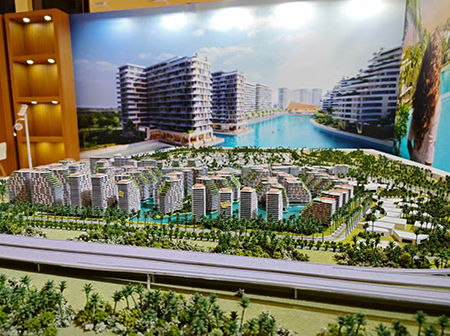
Essential Tips for 3D Printing Precise Mechanical Models
3D printing has revolutionized the way mechanical models are designed and manufactured. Whether you're creating functional prototypes, intricate gears, or precision-fit components, achieving high accuracy is crucial. However, several factors—such as printer calibration, material selection, and post-processing—can significantly impact the final quality.
This guide provides essential tips to help you 3D print precise mechanical models with minimal errors.
---
1. Choose the Right 3D Printing Technology
Not all 3D printing methods are suitable for mechanical models. The most common technologies include:
A. Fused Deposition Modeling (FDM)
- Best for functional prototypes and low-cost mechanical parts.
- Requires careful calibration for precision.
- Layer lines may affect surface finish and tolerances.
B. Stereolithography (SLA) & Digital Light Processing (DLP)
- Higher resolution than FDM, ideal for intricate details.
- Produces smooth surfaces but may require post-curing.
- Resin parts can be brittle, so material selection is critical.
C. Selective Laser Sintering (SLS)
- Excellent for durable, complex mechanical parts.
- No need for support structures, allowing intricate designs.
- Higher cost but superior strength and accuracy.
Recommendation: For high-precision mechanical models, SLA/DLP or SLS is preferable. If budget is a constraint, FDM can still work with proper tuning.
---
2. Optimize Printer Calibration
A well-calibrated printer is essential for dimensional accuracy.
A. Bed Leveling
- An unleveled bed causes uneven first layers, leading to warping and poor adhesion.
- Use a feeler gauge or automated bed-leveling sensors for consistency.
B. Extrusion Calibration (FDM)
- Over- or under-extrusion affects dimensional accuracy.
- Measure filament diameter and adjust extrusion multiplier (flow rate).
- Perform an E-step calibration to ensure precise filament feeding.
C. Belt Tension & Mechanical Stability
- Loose belts cause layer shifting and inaccuracies.
- Check all screws, rods, and linear rails for stability.
D. Temperature Settings
- Incorrect nozzle/bed temperatures lead to poor layer adhesion or warping.
- Conduct test prints to find the optimal temperature for your material.
---
3. Select the Right Material
Different materials have varying mechanical properties and shrinkage rates.
A. PLA (Polylactic Acid)
- Easy to print but can deform under heat.
- Low shrinkage, good for prototypes.
B. ABS (Acrylonitrile Butadiene Styrene)
- Stronger than PLA but prone to warping.
- Requires an enclosed printer and heated bed.
C. PETG (Polyethylene Terephthalate Glycol)
- Combines PLA’s ease of printing with ABS-like durability.
- Minimal warping, good for functional parts.
D. Resins (SLA/DLP)
- High detail but may be brittle.
- Choose engineering resins (e.g., tough, flexible, or high-temperature).
E. Nylon & Polycarbonate (SLS/FDM)
- High strength and heat resistance.
- Ideal for load-bearing mechanical parts.
Recommendation: For precision models, use engineering-grade materials with low warping and high dimensional stability.
---
4. Optimize Design for 3D Printing
Even the best printer can’t compensate for poor design choices.
A. Wall Thickness & Infill
- Thin walls may break; too thick increases print time.
- Use at least 2-3 perimeters for strength.
- 15-30% infill is usually sufficient for mechanical parts.
B. Clearance & Tolerances
- Moving parts need proper clearance (typically 0.2-0.5mm for FDM, 0.1-0.3mm for SLA).
- Test-fit small sections before printing the full model.
C. Support Structures
- Overhangs beyond 45° usually need supports.
- Use tree supports (in Cura) or breakaway supports (SLA) for easier removal.
D. Orientation & Layer Lines
- Print critical surfaces parallel to the build plate for better finish.
- Align load-bearing features along the layer lines to reduce weak points.
---
5. Fine-Tune Slicer Settings
The slicer software converts your 3D model into printer instructions. Key settings include:
A. Layer Height
- 0.1-0.2mm for high detail (slower print).
- 0.2-0.3mm for functional parts (faster print).
B. Print Speed
- 30-60mm/s for FDM (slower for small details).
- Too fast = poor layer adhesion and inaccuracies.
C. Retraction Settings (FDM)
- Prevents stringing by pulling filament back during travel moves.
- Retraction distance: 2-6mm (direct drive) or 6-10mm (Bowden).
- Retraction speed: 25-45mm/s.
D. Cooling
- PLA needs 100% fan cooling after the first few layers.
- ABS should have minimal cooling to prevent warping.
---
6. Post-Processing for Precision
Post-processing improves fit, finish, and functionality.
A. Sanding & Smoothing
- Use wet sanding (400-2000 grit) for FDM parts.
- Acetone vapor smoothing works for ABS (but alters dimensions slightly).
B. Drilling & Tapping
- For precise holes, print slightly undersized and drill to final dimensions.
- Use a tap set for threaded inserts.
C. Annealing (For Strength)
- Heating PLA or ABS in an oven can increase strength but may cause warping.
- Follow material-specific guidelines.
D. Lubrication & Assembly
- Apply silicone grease or PTFE lubricant to moving parts.
- Test-fit components before final assembly.
---
7. Test & Iterate
- Print small test models (e.g., calibration cubes, tolerance tests).
- Measure dimensions with calipers and adjust settings accordingly.
- Keep a log of successful parameters for future prints.
---
Conclusion
Achieving precision in 3D-printed mechanical models requires attention to printer calibration, material selection, design optimization, and post-processing. By following these tips, you can produce highly accurate and functional parts suitable for engineering applications.
Remember: 3D printing is iterative. Even failed prints provide valuable insights for improvement. With practice and fine-tuning, you’ll master the art of precision 3D printing. Happy printing!
本网站使用 cookie 来确保您在我们的网站上获得最佳体验。
评论
(0)